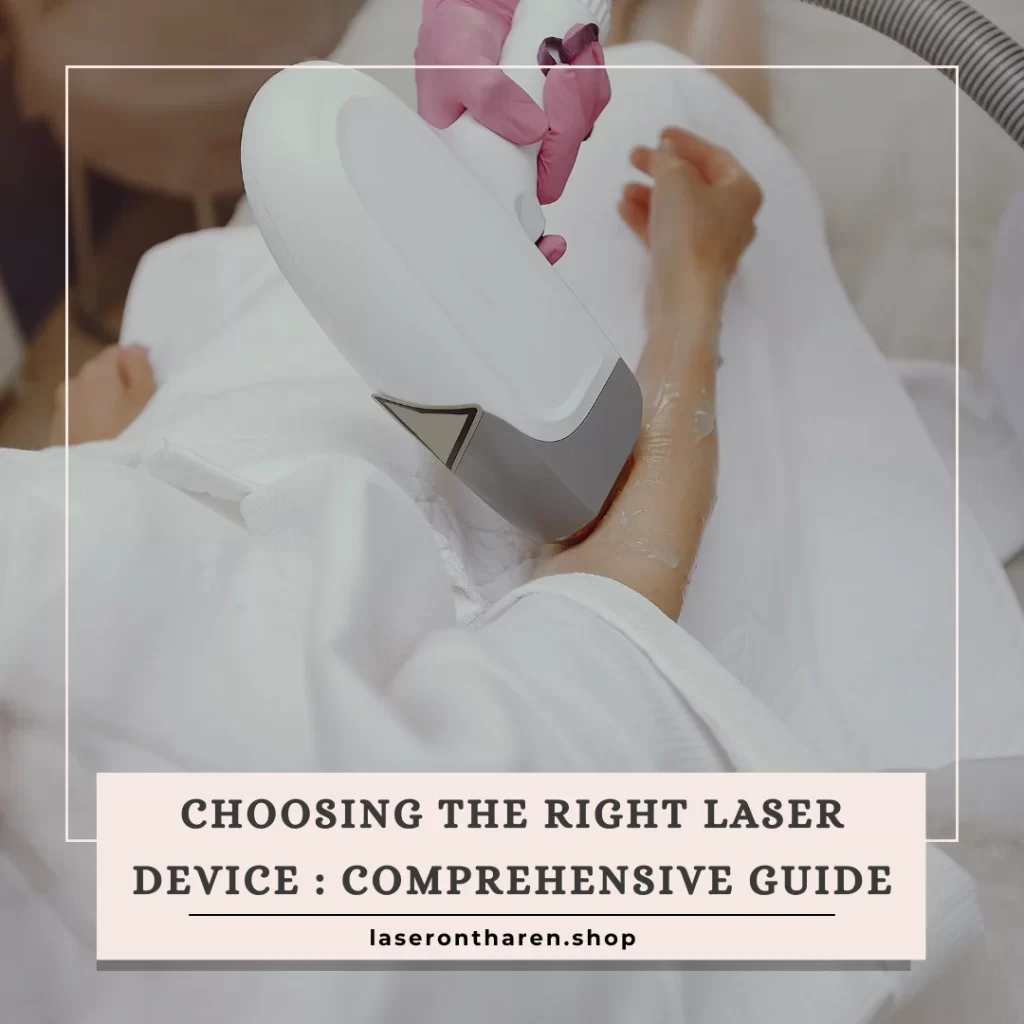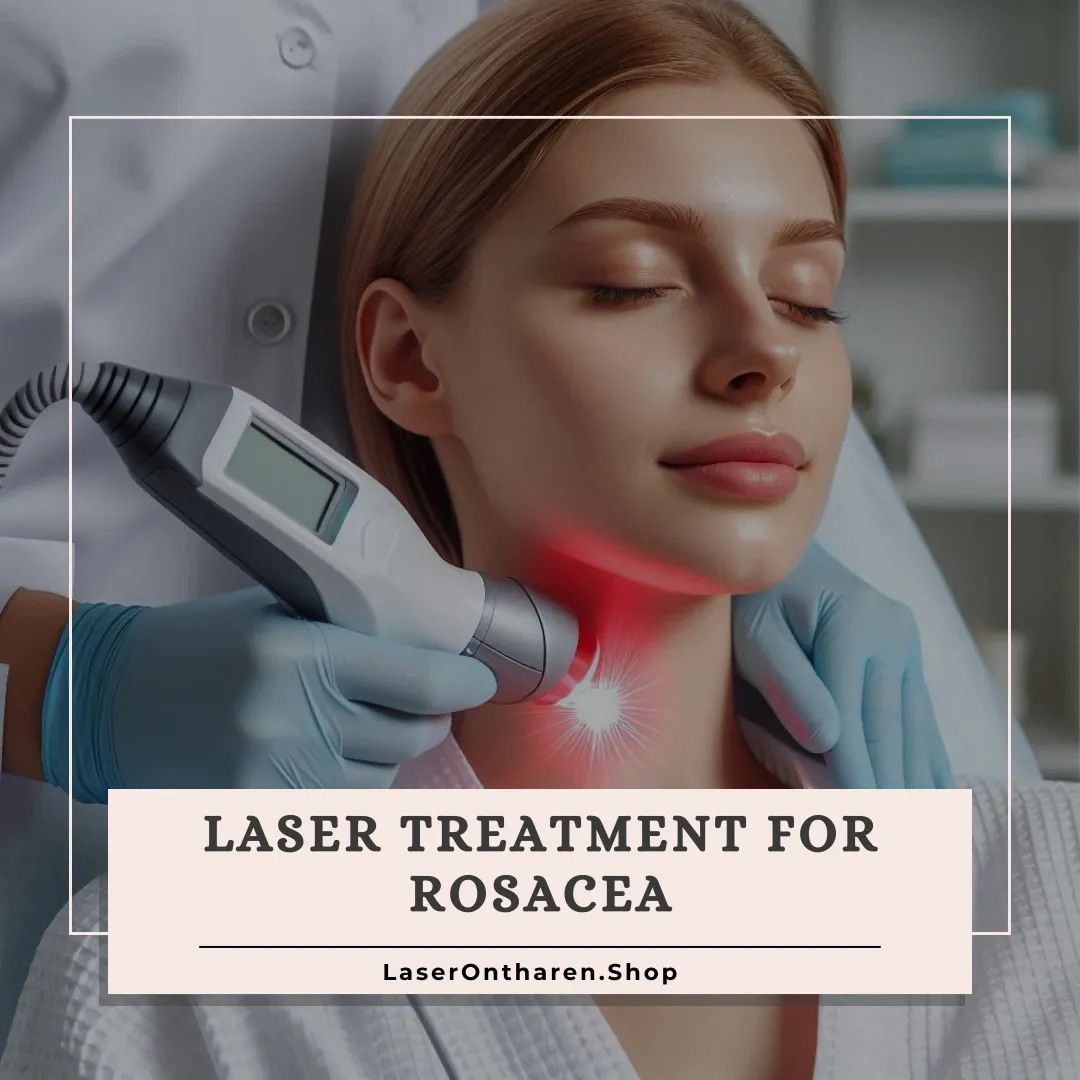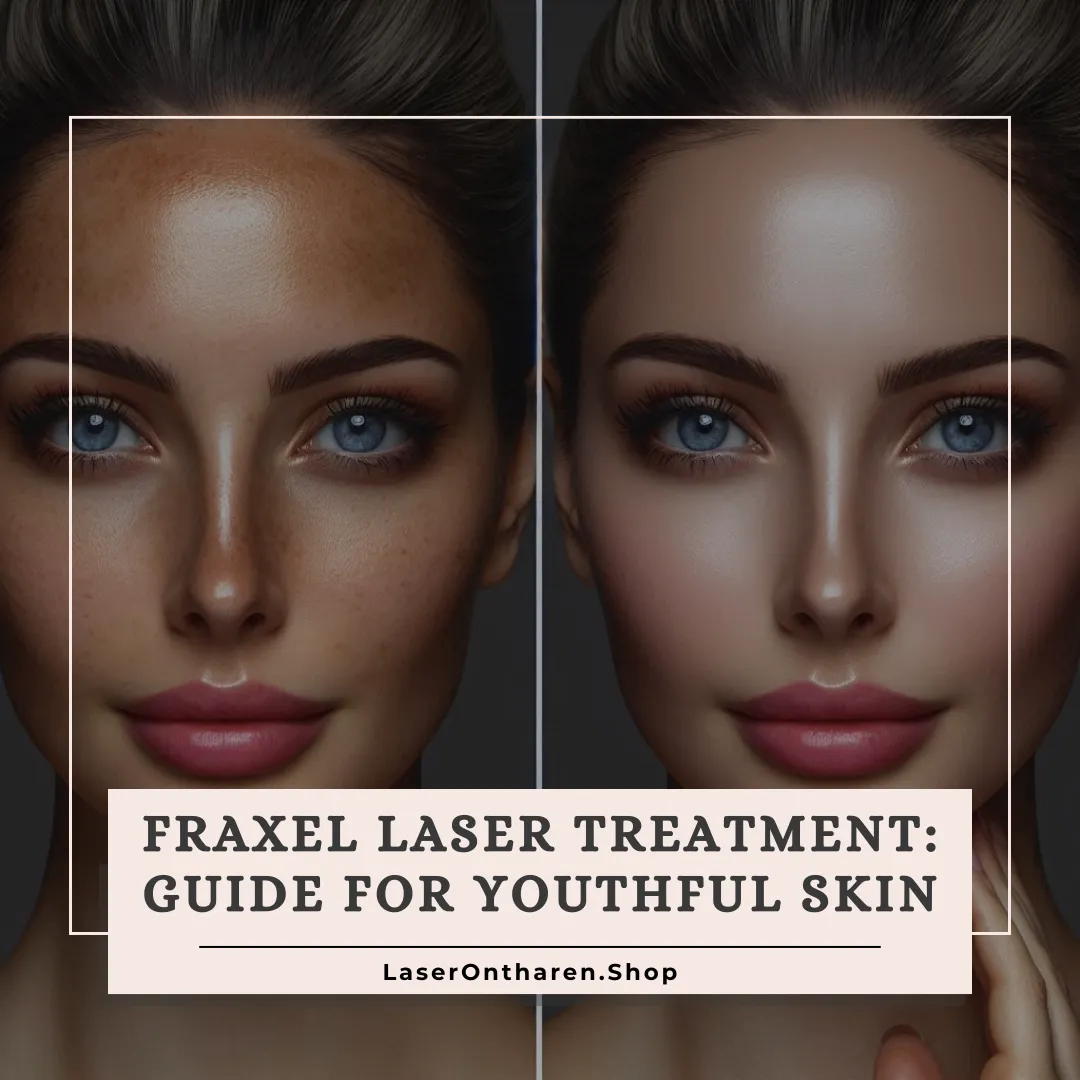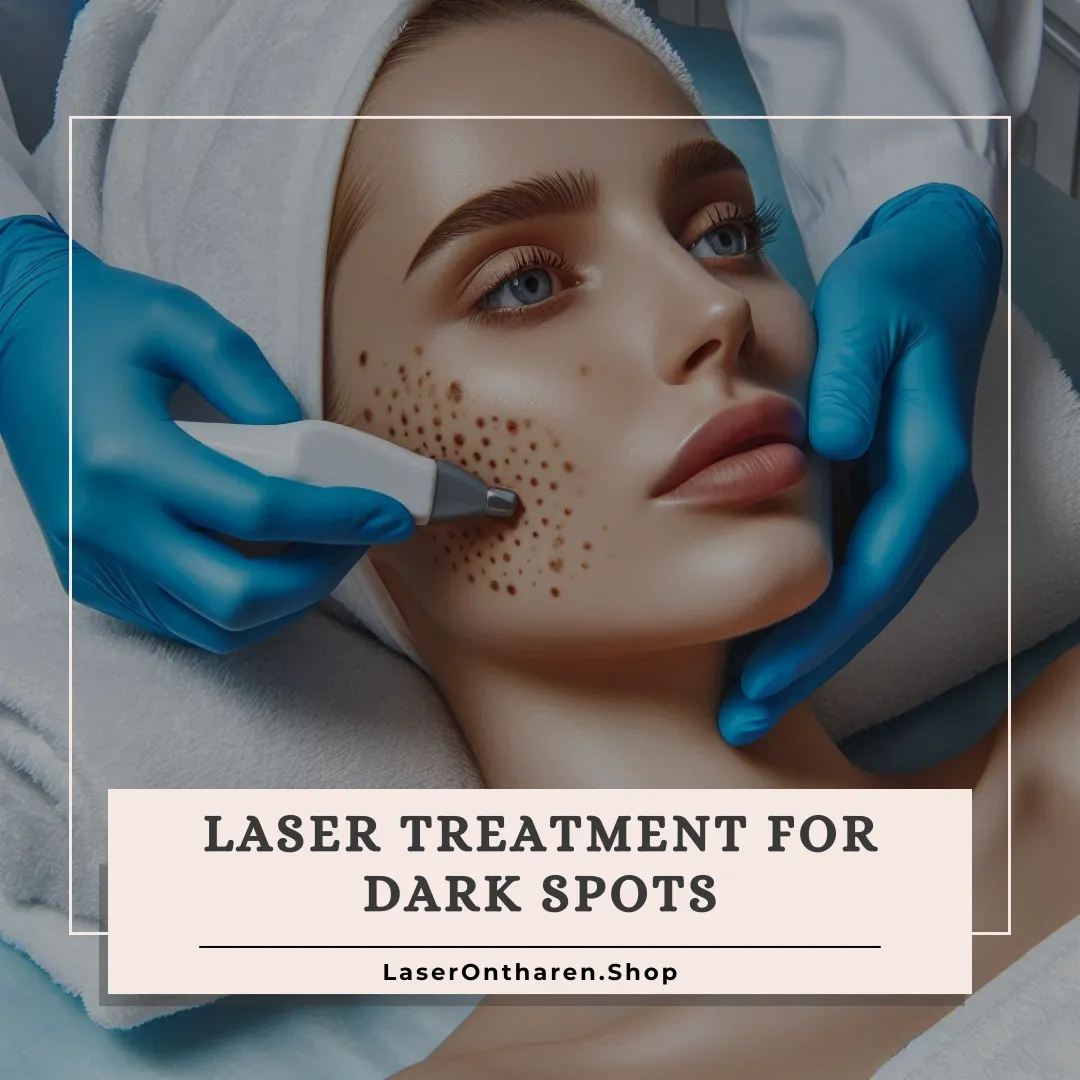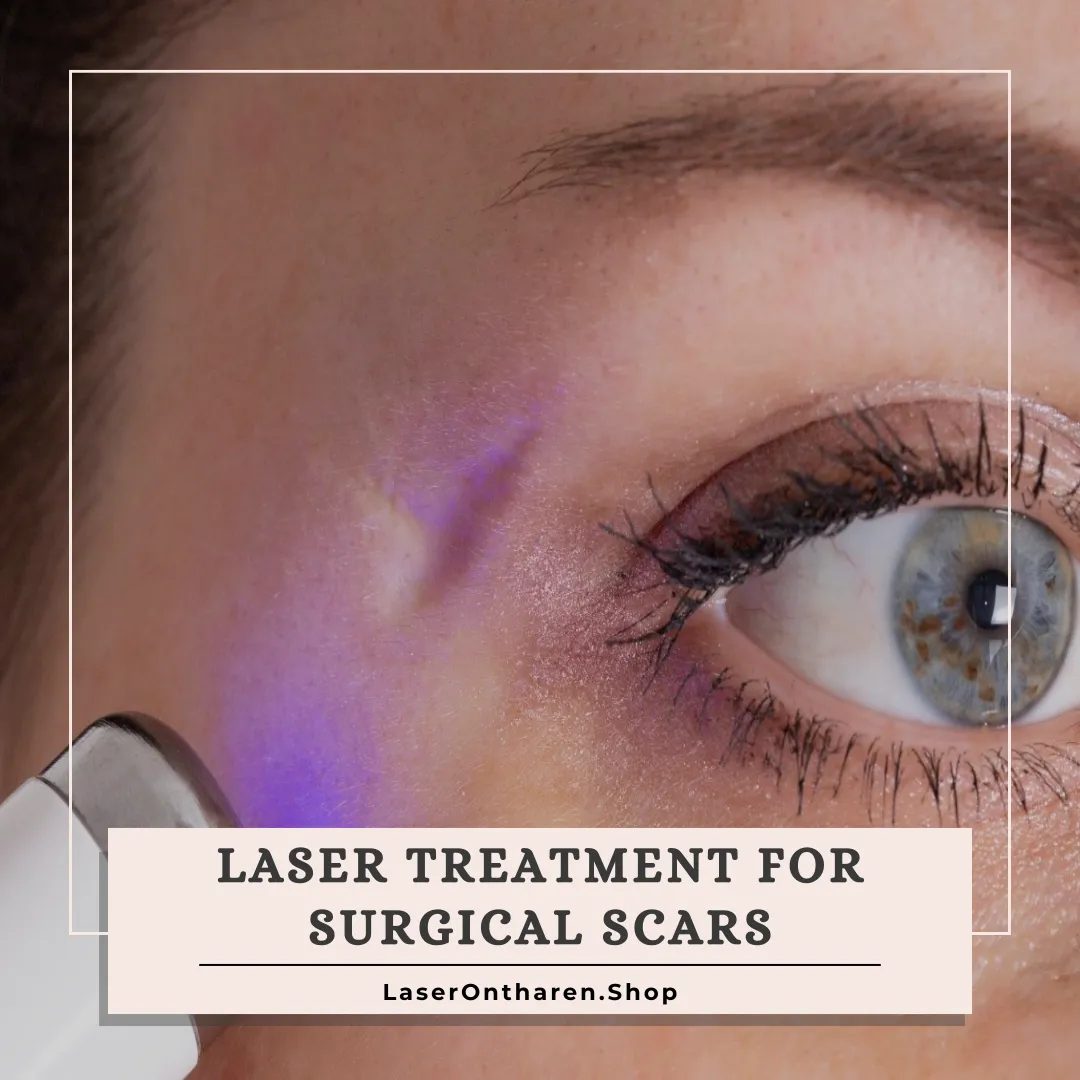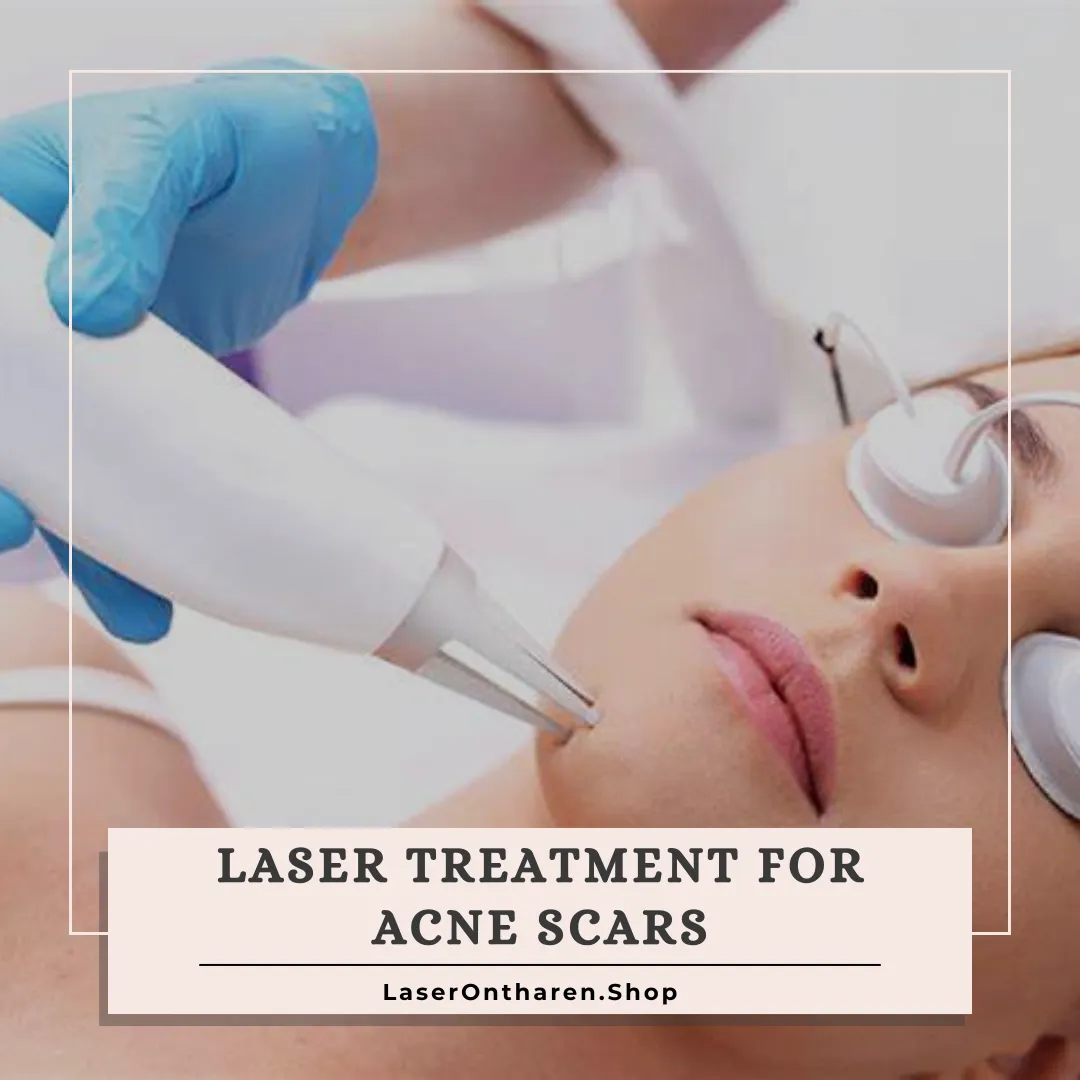Comprehensive Guide: Selecting the Ideal Laser Device in the United States
Introduction:
Are you navigating the market for laser devices in the United States?
Look no further! This comprehensive guide is designed to help you make an informed decision by addressing the top 101 frequently asked questions about choosing the right laser device.
We’ve ensured that the content is unique, relevant, and valuable, incorporating essential keywords to enhance searchability.
1. What factors should I consider when choosing a laser device?
Selecting a laser device requires careful consideration of several key factors.
Firstly, assess your specific needs and intended applications.
Different lasers excel in diverse tasks, such as cutting, engraving, or medical procedures.
Next, examine the laser’s power and wavelength, ensuring they align with your requirements.
Safety is paramount; evaluate built-in safety features and compliance with regulations.
Consider the lifespan and maintenance requirements, as these impact long-term costs.
Compatibility with materials and ease of use are crucial for efficiency.
Lastly, explore customer reviews and testimonials to gauge reliability and performance.
By thoroughly addressing these aspects, you can make an informed decision tailored to your unique needs and priorities.
2. Are there specific regulations for laser devices in the United States?
In the United States, laser devices are subject to regulations to ensure safety and prevent hazards.
The Food and Drug Administration (FDA) oversees these regulations, primarily through the Center for Devices and Radiological Health (CDRH).
The regulations categorize lasers based on their potential to cause harm, and manufacturers must comply with performance standards.
Users are advised to follow safety guidelines and adhere to classification requirements.
These regulations aim to protect users and the public from potential risks associated with laser devices.
Staying informed about these regulations is crucial for businesses and individuals working with or purchasing laser equipment in the U.S.
3. How do I determine the appropriate power level for my laser device?
Determining the appropriate power level for your laser device involves several factors, including the specific treatment, skin type, and desired outcome.
Generally, manufacturers provide guidelines and recommended settings for various treatments such as hair removal, skin rejuvenation, or pigmentation correction.
It’s crucial to start with a lower power setting and gradually increase as needed, to assess the skin’s response and avoid potential damage.
For effective and safe use, consider the following steps:
- Consult the Device Manual: Always refer to the user manual for initial guidance on power settings for specific treatments.
- Understand Skin Types: Different skin types react differently to laser treatments. Fitzpatrick Skin Type Scale is often used to categorize skin and recommend settings.
- Professional Training: If possible, receive training or consult with a professional. They can provide insights on adjusting power levels based on their experience.
- Patch Test: Before a full treatment, perform a patch test on a small, inconspicuous area of the skin to see how it reacts to the laser at a certain power level.
- Adjust According to Feedback: Pay attention to the skin’s reaction during and after the patch test and adjust the power settings accordingly.
Safety should always be your priority. Using too high of a power setting can cause burns, scarring, or other skin damage, while too low may result in ineffective treatment.
4. Can I use a laser device for medical or aesthetic purposes?
Yes, laser devices are widely used for both medical and aesthetic (cosmetic) purposes, offering a range of treatments from skin rejuvenation and scar reduction to the removal of tattoos, hair, and pigmented lesions.
These devices work by emitting a focused beam of light that targets specific tissues in the body, allowing for precise treatments with minimal damage to surrounding areas.
Medical applications include surgeries like tumor removal, cataract surgery, and dental procedures, while aesthetic uses encompass skin resurfacing, wrinkle reduction, and treatment of vascular lesions.
It’s crucial to choose a provider with the appropriate training and certification to ensure safety and effectiveness.
The technology behind these devices has evolved significantly, offering options that range from ablative (removing layers of skin) to non-ablative (targeting the underlying skin tissue without removing the top layer) and fractionated lasers, which minimize recovery time while maximizing results.
5. Are there safety standards I should be aware of?
When using laser devices, safety standards such as the ANSI Z136 series and OSHA regulations provide essential guidelines to prevent hazards.
The ANSI Z136 standards, developed by the Laser Institute of America (LIA), cover various environments and laser types, from general use to specific applications in healthcare and education.
The FDA also regulates laser products, ensuring they meet safety performance standards.
Compliance with these standards is crucial for safe laser use across all settings.
6. What is the difference between diode lasers and solid-state lasers?
Diode lasers and solid-state lasers differ significantly in their construction, applications, and performance, particularly in the beauty and cosmetic laser device industry.
Diode lasers utilize semiconductor materials as their active medium, enabling them to produce a wide range of light wavelengths, from ultraviolet to near-infrared.
This flexibility allows diode lasers to be lightweight, compact, and efficient, making them ideal for portable applications and treatments like hair removal and acne treatment.
Their increased energy efficiency also means they run cooler and are less likely to overheat, thus requiring less maintenance.
On the other hand, solid-state lasers use solid materials such as crystals, glasses, or ceramics as their active medium.
These materials, like Ruby, Nd:YAG, Er:YAG, and Alexandrite, determine the laser’s power and wavelength.
Solid-state lasers are known for their high power output, excellent beam quality with low divergence, and long lifespan.
They are highly effective for precise applications needing focused beams, such as cutting, welding, and delicate medical procedures.
Solid-state lasers offer versatility with adjustable wavelengths and are generally considered safer for medical applications due to their long pulse durations.
In essence, the choice between diode and solid-state lasers depends on the specific needs of your clinic and the types of treatments you offer.
Diode lasers are more suited for portable, less intensive applications, while solid-state lasers are ideal for high-precision and power-demanding procedures.
7. How do I know if a laser device is FDA-approved?
To verify if a laser device is FDA-approved, you can use the FDA’s Devices@FDA database by searching with the device or company name for approved or cleared products.
Registration and listing on the FDA’s database do not indicate approval but are required for facilities producing medical devices in the U.S.
The De Novo database can be checked for devices granted a new type of classification, indicating low to moderate risk.
Additionally, for devices authorized for emergency use, the FDA’s Emergency Use Authorizations listings should be consulted.
It’s important to remember that terms like “FDA Registered” do not mean the device is FDA-approved or cleared.
8. Are there restrictions on importing laser devices?
Importing laser devices into the U.S. involves strict adherence to FDA regulations to ensure the safety and compliance of radiation-emitting electronic products.
Both medical and non-medical laser devices must meet the requirements set forth under the Electronic Product Radiation Control (EPRC) provisions of the Federal Food, Drug, and Cosmetic Act.
The process mandates that manufacturers or importers submit Form FDA-2877, indicating compliance with U.S. Federal Performance Standards.
The FDA’s Center for Devices and Radiological Health (CDRH) plays a crucial role in overseeing these regulations, ensuring that foreign manufacturers designate a U.S. agent and fulfill various regulatory obligations including registration, listing, and reporting.
The submission of accurate and complete documentation, such as the Form FDA-2877 and adherence to performance standards, is essential for the smooth importation of laser devices, helping to prevent delays or detentions at the point of entry.
9. Can I use a laser device for at-home applications?
Yes, laser devices specifically designed for beauty and cosmetic purposes can be safely used at home, provided they are FDA-approved for consumer use.
These at-home laser devices offer convenience for treatments like hair removal, skin rejuvenation, and acne reduction.
It’s crucial to follow the manufacturer’s instructions closely and understand the device’s safety features to ensure effective and safe use.
Always start with a patch test to check for any adverse reactions before proceeding with full treatment.
10. What maintenance is required for laser devices?
Maintaining cosmetic laser devices requires regular checks and preventative care to ensure they function efficiently.
Key components like the power supply, cooling system, and optics need routine inspection. Proper handling during use is crucial to avoid damage.
Scheduled preventative maintenance shouldn’t be skipped to keep the device in top condition.
For comprehensive care, it’s advised to have trained technicians handle repairs and use OEM parts for replacements.
11. Are there specific certifications I should look for?
When selecting beauty and cosmetic laser devices, certifications from the Food and Drug Administration (FDA) are crucial as they ensure the device meets safety and efficacy standards. Additionally, look for compliance with standards set by the American National Standards Institute (ANSI) or the International Electrotechnical Commission (IEC), which further affirm the device’s safety and quality.
Operator training certifications are also important, as they indicate the user’s proficiency and knowledge in safely handling the laser equipment.
These certifications help ensure both the safety of the user and the effectiveness of the treatment.
12. How does wavelength affect the performance of a laser device?
The wavelength of a laser device significantly influences its performance and suitability for different cosmetic treatments.
Shorter wavelengths are ideal for targeting melanin in hair removal and pigmented lesion treatments, making them effective for lighter skin tones.
Longer wavelengths penetrate deeper into the skin, suitable for treating vascular lesions and performing skin tightening and rejuvenation on a wider range of skin types.
Thus, selecting a laser with the appropriate wavelength is crucial for achieving desired results while minimizing risks and side effects.
13. What safety precautions should I take when using a laser device?
When using a beauty or cosmetic laser device, it’s essential to follow safety precautions to protect yourself and others. Always wear appropriate eye protection to shield against harmful laser light. Read the manufacturer’s instructions carefully before use, and only operate the device if you’re trained or familiar with its functions. Keep the laser away from reflective surfaces to prevent accidental exposure. Use the device in a well-ventilated area to avoid inhaling any fumes from the treatment site. Lastly, never point the laser at yourself or others to prevent skin and eye damage.
14. What is the lifespan of a typical laser device?
The lifespan of a typical laser device used for beauty and cosmetic purposes varies but generally ranges from 5 to 10 years.
This depends on factors like usage frequency, maintenance practices, and the quality of the device.
Regular maintenance and proper handling can extend its life, ensuring it remains effective and safe for use over time.
15. Can I operate a laser device without professional training?
Operating a laser device without professional training is not recommended, especially for beauty and cosmetic laser devices.
These devices require an understanding of laser physics, skin types, and safety protocols to ensure effective and safe treatments.
Untrained use can lead to skin damage, burns, or other serious injuries.
It’s important to undergo certified training or consult a professional to avoid risks.
16. Are there grants or incentives for purchasing laser devices?
Grants or incentives for purchasing laser devices, particularly in the fields of healthcare, education, or small business development, may be available through various government, non-profit, or industry-specific programs.
These financial aids aim to support the adoption of advanced technology to improve services or research capabilities.
It’s advisable to research and contact relevant local, state, or federal agencies, as well as industry associations, for information on available funding opportunities tailored to your specific needs or sector.
17. What is the role of cooling systems in laser devices?
Cooling systems in laser devices are critical for managing heat generated during operation.
They prevent overheating, ensuring the laser’s performance and longevity.
Efficient cooling contributes to consistent output quality, safety during treatments, and extends the lifespan of the laser by protecting its components from heat damage.
18. How do I troubleshoot common issues with laser devices?
Troubleshooting common issues with laser devices involves a systematic approach, starting with checking the device’s settings and components like the motherboard, wiring, and power supply for any faults.
Regular maintenance, such as cleaning lenses and adjusting the light path, is crucial.
For specific problems like uneven cleaning or the laser not firing, solutions range from replacing aging parts like the laser tube to ensuring all connections are secure and components are functioning properly.
It’s important to address issues early to maintain the device’s performance and safety.
19. Are there tax implications for owning a laser device?
Owning a laser device, especially for business purposes, can have tax implications depending on how the device is used and the jurisdiction.
For businesses, laser devices might be considered assets, and their purchase, operation, and depreciation could affect your business taxes.
It’s essential to consult with a tax professional to understand the specific tax obligations and benefits, such as deductions for equipment costs or operational expenses, related to owning and using a laser device in your business.
20. Can I customize the settings on my laser device?
Yes, you can customize the settings on your laser device to suit your needs.
Most at-home laser devices come with adjustable settings to cater to different skin tones, hair types, and personal tolerance levels.
For instance, devices often feature multiple power levels or energy settings, allowing users to start with a lower intensity and gradually increase as needed.
This flexibility is crucial for ensuring both the safety and effectiveness of the treatment, as different skin types and conditions may require different levels of laser exposure.
devices like the Silk’n Infinity 400,000 offer multiple energy levels to customize treatments, enhancing user experience by allowing for personalized skincare routines.
Some devices also offer features like cooling mechanisms to minimize discomfort.
It’s important to carefully read and follow the manufacturer’s instructions to select the appropriate settings for your skin and hair type, ensuring both safety and efficacy.
21. What is the impact of laser device emissions on the environment?
The environmental impact of laser device emissions, particularly in the beauty and cosmetic industry, is relatively minimal compared to other environmental concerns associated with the industry, such as excessive packaging, plastic pollution, and unsustainable resource consumption.
However, it’s important to consider the energy consumption of these devices and the manufacturing processes involved.
While direct emissions from laser devices used for cosmetic purposes are not a major environmental concern, the energy used to power these devices and the production process can contribute to the overall carbon footprint.
Sustainable practices in manufacturing and using energy-efficient devices can help mitigate these impacts.
The beauty industry is increasingly focusing on sustainability, with efforts to reduce carbon emissions and make environmentally friendly choices.
22. How do I choose the right laser device for hair removal?
Choosing the right laser device for hair removal involves considering several factors to ensure it meets your specific needs.
Firstly, it’s essential to select a device that is clinically proven to be safe and effective, as trusted brands often back their products with research and customer support.
Look for devices that are CE certified and/or FDA cleared to ensure they meet safety standards.
Secondly, consider your skin tone and hair color.
Some devices are designed to be safe for darker skin tones or effective on fair hair by combining IPL with other energies like Radio Frequency, which do not require dark melanin pigment to work.
Thirdly, evaluate the device’s features, such as multiple energy levels for different body parts, lightweight design for ease of use, and a qualified energy density and wavelength that guarantee effective hair follicle targeting without causing pain or skin damage.
Lastly, be cautious of very cheap options, as they might compromise on filter quality, affecting the hair removal effectiveness and skin safety.
By considering these aspects, you can find a device that offers a comfortable, effective, and safe hair removal experience.
23. Can I use a laser device for tattoo removal?
Yes, laser devices can be used for tattoo removal and are considered more effective and safer than other methods.
Advances in laser technology have improved the efficiency of tattoo removal, allowing for fewer treatments and the ability to treat colors that were previously difficult to remove.
However, the success of removal depends significantly on the professional performing the procedure.
It’s recommended to consult a board-certified dermatologist for laser tattoo removal to ensure safety and effectiveness.
The process involves multiple sessions, and factors like the tattoo’s age, depth, colors, and your skin type play a crucial role in the outcome.
24. How do I dispose of a laser device properly?
When disposing of a beauty laser device, it’s essential to follow proper guidelines to ensure safety and environmental compliance:
- Manufacturer Guidelines: Check the device’s user manual or contact the manufacturer for disposal instructions. They often offer recycling programs or can provide specific disposal recommendations.
- Hazardous Waste Protocols: Laser devices may contain hazardous materials like lead, cadmium, or mercury. Contact local waste management to determine if the device qualifies as electronic waste (e-waste).
- Professional Disposal Services: Utilize specialized e-waste disposal services. They ensure safe dismantling, recycling, and disposal while complying with environmental regulations.
- Data Security: If the device contains user information, ensure proper data wiping before disposal.
- Regulatory Compliance: Follow local, state, and federal regulations regarding the disposal of medical equipment. The FDA or environmental agencies often have guidelines that must be adhered to.
By responsibly disposing of the device, you contribute to environmental protection and maintain compliance with health and safety standards.
25. Are there regulations regarding the sale of laser devices?
Yes, regulations govern the sale of beauty laser devices to ensure safety and efficacy:
- FDA (USA): In the United States, the Food and Drug Administration (FDA) classifies beauty laser devices as medical devices. They must meet FDA regulations for safety and performance, typically falling under Class II or III devices. This includes obtaining premarket clearance (510(k)) or approval.
- CE Marking (EU): In the European Union, beauty laser devices must comply with the Medical Device Regulation (MDR) and require a CE mark. This certification indicates conformity with health, safety, and environmental protection standards.
- Labeling Requirements: All devices must have proper labeling, including warnings, contraindications, and usage instructions.
- Sales Restrictions: Sales of medical-grade laser devices may be limited to licensed medical professionals in some jurisdictions. Non-medical devices (e.g., at-home lasers) often have different regulatory standards.
- Advertising Regulations: Claims about the device’s effectiveness must be accurate and substantiated, and misleading advertising is prohibited.
It’s essential to familiarize yourself with both international and local regulations before selling laser devices to ensure compliance.
26. How do I determine the beam quality of a laser device?
To determine the beam quality of a beauty laser device, consider the following factors and methods:
- M² Value:
- Measures the deviation of the beam from an ideal Gaussian beam.
- An M² value close to 1 indicates high beam quality.
- Beam Diameter and Divergence:
- Measure the beam diameter at different points along the propagation path.
- Calculate divergence (rate of beam expansion) to evaluate focus quality.
- Beam Profile:
- Use a beam profiler or camera-based system to visualize the intensity distribution across the beam.
- A uniform, symmetrical profile suggests higher quality.
- Spot Size and Shape:
- Check the focus spot size and shape on the treatment area.
- An ideal spot should be uniform and symmetrical.
- Power Density (Fluence):
- Calculate the energy per unit area to ensure consistent and effective treatment.
- Manufacturer Specifications:
- Compare the beam quality with the manufacturer’s specifications for consistency.
By assessing these factors, you can determine the beam quality and suitability of a beauty laser device for cosmetic procedures.
27.What is the role of pulse duration in laser devices?
Pulse duration, or pulse width, plays a crucial role in the effectiveness and safety of beauty laser devices:
- Selective Photothermolysis:
- Pulse duration determines how long the laser energy interacts with the target tissue.
- For effective treatment, the pulse duration should be shorter than or match the thermal relaxation time (TRT) of the target, preventing heat diffusion to surrounding tissues.
- Treatment Specificity:
- Short Pulse Duration: Ideal for superficial targets like hair follicles or small pigmented lesions. The rapid energy delivery minimizes heat spread and reduces skin damage.
- Long Pulse Duration: Suitable for deeper targets or larger structures like vascular lesions. Longer pulses gradually heat the target, preventing immediate thermal damage.
- Treatment Safety:
- Proper pulse duration reduces the risk of burns, scarring, or pigment changes by limiting energy exposure to non-target tissues.
- Skin Type and Tolerance:
- Adjusting pulse duration helps accommodate different skin types, allowing effective treatment while minimizing adverse effects.
In summary, pulse duration allows for precision in targeting specific tissues while maximizing treatment effectiveness and safety.
28. Can I use a laser device for cosmetic procedures?
Yes, you can use a laser device for cosmetic procedures, provided it’s appropriately designed and approved. Here’s what you should consider:
- Device Type and Approval:
- Ensure the laser device is specifically designed and FDA-approved (or CE-marked) for cosmetic treatments.
- Medical-grade lasers are required for many cosmetic procedures, often needing a licensed professional to operate.
- Cosmetic Applications:
- Hair Removal: Diode and Nd:YAG lasers effectively target hair follicles.
- Skin Rejuvenation: Fractional CO₂ and erbium lasers can improve texture and tone.
- Pigmentation and Vascular Lesions: Alexandrite and pulsed dye lasers help reduce age spots, freckles, and vascular lesions.
- Tattoo Removal: Q-switched lasers break down tattoo ink particles.
- Acne Scars and Wrinkles: Fractional lasers smooth acne scars and fine lines.
- Training and Safety:
- Proper training is crucial to ensure safe and effective procedures.
- Follow safety protocols, such as eye protection and skin cooling.
- Contraindications:
- Consider patient factors like skin type, medical history, and contraindications to avoid complications.
Always prioritize safety and compliance with regulations when using lasers for cosmetic procedures.
29. What is the significance of spot size in laser devices?
Spot size in laser devices is significant because it directly affects treatment outcomes and safety in cosmetic procedures. Here’s a brief overview:
- Treatment Precision:
- A smaller spot size allows for targeted treatments on small areas, such as individual lesions or hairs.
- Larger spot sizes are better for covering broader areas quickly, ideal for hair removal or skin resurfacing.
- Energy Density (Fluence):
- Spot size influences energy density. A smaller spot size yields higher fluence at the same energy output, which is crucial for treating specific targets like hair follicles or pigmented lesions.
- Penetration Depth:
- Larger spot sizes enable deeper penetration, beneficial for reaching deeper hair follicles or vascular lesions.
- Smaller spots typically focus on more superficial treatments.
- Treatment Speed:
- Larger spot sizes cover more area per pulse, reducing treatment time.
- Smaller spots may require multiple passes for comprehensive coverage.
- Risk of Side Effects:
- Incorrect spot sizes can lead to burns, hyperpigmentation, or incomplete treatments due to under- or over-exposure.
In summary, the spot size is essential for balancing treatment effectiveness, safety, and efficiency in cosmetic laser procedures.
30. How do I obtain training for operating a laser device?
To obtain training for operating a beauty laser device:
- Manufacturer Training Programs:
- Many laser device manufacturers offer in-house or online training for their products.
- Provides hands-on experience with specific models and software.
- Accredited Laser Training Schools:
- Enroll in recognized laser training schools that offer certification courses.
- Courses often include theoretical and practical components.
- Look for programs accredited by organizations like the National Council on Laser Certification (NCLC) or equivalent.
- Professional Associations:
- Join associations like the American Society for Laser Medicine and Surgery (ASLMS) for courses, webinars, and certification exams.
- State-Specific Licensing:
- Check state regulations regarding required licensing or certification.
- Some states require medical professionals or estheticians to complete specific courses.
- Continuing Education:
- Attend seminars, workshops, and conferences to stay updated on the latest techniques and safety protocols.
- Mentorship and Apprenticeship:
- Work under an experienced laser technician or dermatologist to gain practical insights.
- Online Courses and Webinars:
- Many organizations and schools provide online courses for theoretical training.
Proper training ensures safety, efficacy, and compliance with regulations during cosmetic laser procedures.
31. What safety features should I look for in a laser device?
When selecting a beauty laser device, consider these safety features to ensure safe and effective operation:
- Wavelength-Specific Eye Protection:
- Protective eyewear matched to the device’s wavelength to shield both the operator and patient.
- Cooling Systems:
- Integrated skin cooling via contact, cryogen spray, or air cooling to reduce discomfort and prevent burns.
- Pulse Duration and Energy Control:
- Adjustable pulse duration and energy settings to tailor treatments and avoid excessive exposure.
- Interlock System:
- Prevents accidental firing of the laser when safety goggles are not worn or the handpiece is not in contact with the skin.
- Emergency Stop Button:
- Immediate shutdown capability in case of an emergency.
- Automatic Calibration and Self-Diagnostics:
- Ensures accurate energy delivery and alerts for potential malfunctions.
- Spot Size Selection:
- Allows for precise targeting, reducing the risk of affecting unintended areas.
- Motion Sensors:
- Detects and prevents unintentional movement of the handpiece during operation.
- Password Protection:
- Restricts access to authorized personnel only, preventing unauthorized usage.
- Comprehensive User Manual:
- Detailed instructions and safety guidelines for operating the device.
By ensuring these safety features are present, you can minimize risks and enhance the efficacy of your cosmetic treatments.
32. Are there advancements in laser technology that I should be aware of?
Yes, recent advancements in laser technology have significantly improved the effectiveness and safety of cosmetic procedures. Here are some noteworthy developments:
- Picosecond Lasers:
- Deliver ultra-short pulses (trillionths of a second) for tattoo removal, pigmentation, and skin rejuvenation.
- Faster results with reduced risk of side effects.
- Fractional Laser Technology:
- Fractional CO₂ and erbium lasers create microthermal zones, leaving surrounding tissue intact.
- Reduces recovery time while improving skin texture and tone.
- Hybrid Laser Systems:
- Combine ablative and non-ablative wavelengths for comprehensive treatment (e.g., Sciton’s Halo).
- Suitable for addressing multiple skin concerns in a single session.
- Thulium Lasers:
- 1927 nm wavelength targets pigmentation and superficial skin irregularities.
- Ideal for melasma and sun damage with minimal downtime.
- Dynamic Cooling Devices:
- Integrated cooling technology enhances patient comfort and safety.
- Prevents burns by reducing skin surface temperature.
- Multi-Wavelength Platforms:
- Devices that offer multiple wavelengths (e.g., Nd:YAG, Alexandrite, Diode) in one system.
- Provides versatility for treating various skin types and conditions.
- AI-Powered Devices:
- Utilize artificial intelligence to analyze skin types and customize treatment parameters.
- Reduces operator error and enhances treatment precision.
- Non-Invasive Body Contouring:
- High-energy lasers target subcutaneous fat for fat reduction (e.g., SculpSure).
Staying updated on these advancements can help you offer the latest, most effective treatments to your clients.
33. What is the role of beam divergence in laser devices?
Beam divergence plays a significant role in laser devices by influencing the focus, precision, and penetration of the laser beam:
- Beam Spread:
- Beam divergence is the measure of how much a laser beam expands over distance.
- Higher divergence means the beam spreads out more, while lower divergence keeps the beam narrower over longer distances.
- Focusing Ability:
- A low-divergence beam can be focused to a smaller spot size, which is crucial for precise targeting in cosmetic procedures.
- This precision is important for treating small areas like pigmented lesions or individual hair follicles.
- Treatment Depth:
- Lower divergence results in deeper penetration, allowing the beam to reach deeper structures like vascular lesions or hair follicles.
- High divergence beams may only treat superficial layers due to rapid spreading.
- Beam Quality and Power Density:
- Lower divergence maintains a higher power density over distance, which is essential for effective treatments.
- High divergence reduces power density, potentially decreasing treatment efficacy.
- Safety and Collimation:
- Proper beam divergence reduces unintended tissue damage and improves the uniformity of treatment.
- Collimating lenses or optics help control divergence and maintain beam quality.
In summary, controlling beam divergence is crucial for achieving precise, safe, and effective results in beauty laser treatments.
34. Are there guidelines for using laser devices in the healthcare industry?
Yes, there are several guidelines for using laser devices in the healthcare industry to ensure safety and efficacy:
- ANSI Z136.3 Standard (USA):
- Published by the American National Standards Institute (ANSI), this standard provides guidelines for the safe use of lasers in healthcare.
- Includes recommendations for facility design, personnel training, and protective equipment.
- FDA Regulations (USA):
- The FDA’s Center for Devices and Radiological Health (CDRH) regulates medical laser devices under 21 CFR Part 1040.
- Devices must receive premarket clearance or approval before being sold.
- IEC 60825-1 Standard:
- An international standard outlining safety requirements for laser products.
- Includes classification of laser devices based on risk and provides guidance on labeling, safety features, and operator training.
- Laser Safety Officer (LSO):
- Healthcare facilities should appoint a trained LSO to oversee laser safety programs.
- The LSO ensures compliance with regulations, conducts hazard evaluations, and implements safety protocols.
- Training and Certification:
- Operators must receive training in laser physics, tissue interaction, and safety protocols.
- Certifications like Certified Medical Laser Safety Officer (CMLSO) are recommended.
- Protective Measures:
- Use wavelength-specific protective eyewear for staff and patients.
- Implement proper ventilation for plume management in ablative procedures.
- Documentation and Quality Assurance:
- Maintain detailed logs of treatments, safety checks, and incident reports.
- Regularly calibrate and service laser devices.
- Patient Selection and Consent:
- Assess patients for suitability, considering contraindications.
- Obtain informed consent outlining risks, benefits, and alternative treatments.
These guidelines help ensure the safe and effective use of laser devices in healthcare settings.
35. What is the impact of laser devices on human health?
The impact of laser devices on human health varies depending on the type of laser and the procedure being performed. Here are the potential effects:
Positive Impacts
- Cosmetic Improvements:
- Skin Rejuvenation: Reduces wrinkles, scars, and pigmentation.
- Hair Removal: Long-term reduction of unwanted hair.
- Tattoo Removal: Effective for eliminating unwanted tattoos.
- Vascular and Pigmented Lesion Treatment: Removes visible veins and pigmented spots.
- Medical Benefits:
- Surgical Precision: Enables minimally invasive surgeries with less bleeding and faster recovery.
- Vision Correction: Corrects vision through LASIK and PRK procedures.
- Pain Relief: Laser therapy can reduce pain and inflammation in musculoskeletal conditions.
Potential Negative Impacts
- Skin Burns and Scarring:
- Overexposure to laser energy may cause burns, blisters, or scarring.
- Improper settings or untrained operators increase these risks.
- Eye Damage:
- Direct or reflected exposure can cause retinal burns or cataracts.
- Protective eyewear is essential.
- Hyperpigmentation/Hypopigmentation:
- Dark or light patches may appear on the skin, particularly in patients with darker skin tones.
- Allergic Reactions:
- Rarely, laser therapy can trigger an allergic reaction to substances released during the procedure.
- Infection:
- Poor post-treatment care or compromised equipment sterility may lead to infections.
- Radiation Risks:
- Prolonged exposure to certain wavelengths could potentially have long-term effects, though this is rare in cosmetic lasers.
- Respiratory Issues:
- Laser plume generated during ablation contains particulates that could affect respiratory health if inhaled.
Safety Measures
- Training and Certification: Ensure the operator is trained and certified.
- Appropriate Equipment Use: Use protective eyewear and follow device-specific safety protocols.
- Consultation and Screening: Conduct a thorough patient screening and consultation to identify contraindications.
By understanding both the positive and negative impacts, practitioners can optimize treatments while minimizing risks to patients.
36. Are there regulations regarding the advertising of laser devices?
Yes, there are regulations regarding the advertising of laser devices to ensure that claims are accurate and not misleading. Here’s a summary:
United States
- FDA Regulations:
- The FDA oversees the marketing of medical devices, including cosmetic laser devices.
- Advertisements must not contain false or misleading statements and should be consistent with the product’s labeling.
- All claims about the device’s benefits must be substantiated by clinical evidence.
- FTC Regulations:
- The Federal Trade Commission (FTC) ensures that marketing claims are truthful and not deceptive.
- Endorsements or testimonials must reflect typical patient results and include disclosures for paid endorsements.
European Union
- Medical Device Regulation (MDR):
- The MDR requires that all marketing and promotional materials for laser devices in the EU be accurate and not misleading.
- Claims must align with the intended purpose specified in the CE-marked labeling.
- Comparative advertising should be fair and not disparage competitors.
- Advertising Standards Authority (UK):
- In the UK, the ASA regulates advertising to ensure compliance with the Committee of Advertising Practice (CAP) Code.
- Advertisers should avoid exaggerating treatment results or implying outcomes that can’t be guaranteed.
Other Considerations
- Medical Professionals vs. Consumers:
- Regulations differentiate between advertising to healthcare professionals and direct-to-consumer advertising.
- Consumer advertisements often have stricter requirements.
- Labeling and Instructions:
- Marketing materials should not contradict the device’s labeling or instructions for use.
- Social Media and Influencers:
- Social media advertising must comply with regulatory guidelines, including proper disclosures and accurate claims.
Key Recommendations
- Legal Review: Have all marketing materials reviewed by legal experts to ensure compliance.
- Clear Disclosures: Include disclaimers and disclosures about results, risks, and limitations.
- Educational Approach: Focus on educating consumers rather than overpromising.
By adhering to these regulations, companies can market their laser devices responsibly and avoid legal issues.
Conclusion:
This guide aims to address the most common queries surrounding the selection of laser devices in the United States.
By providing unique and relevant content, we hope to assist you in making an informed decision when choosing the right laser device for your specific needs.
